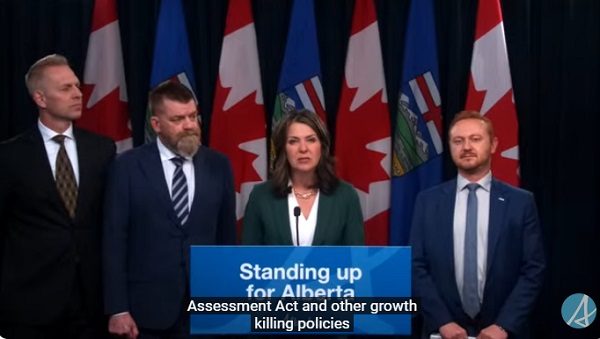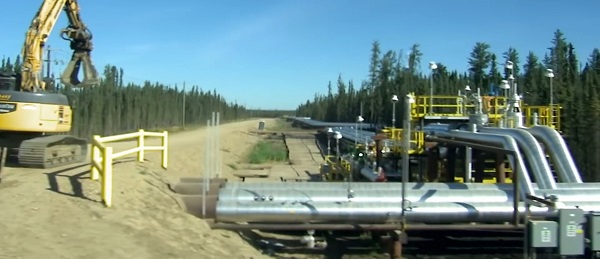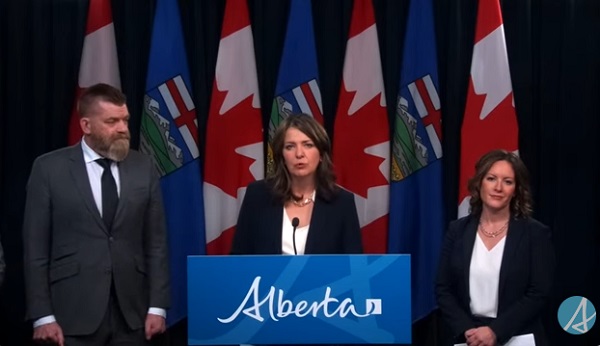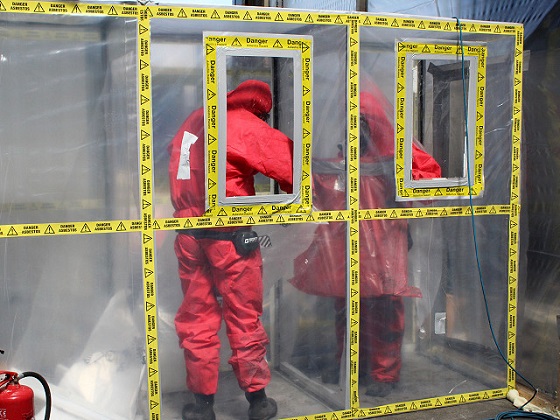Alberta
Alberta taking Trudeau government to court to fight unconstitutional Impact Assessment Act

Alberta’s government is again taking the federal government to court over its unconstitutional Impact Assessment Act after they failed to meet the province’s four-week deadline.
Impact Assessment Act lands Ottawa in court again |
In October 2023, the Supreme Court of Canada concluded that the Impact Assessment Act was largely unconstitutional. On June 20, 2024, the federal government amended the Impact Assessment Act as part of a large omnibus budget bill. The amendments fail to correct the constitutional deficiencies the Supreme Court of Canada identified with the original legislation and will continue killing jobs and hurting the economy.
Alberta’s government gave the federal government a four-week deadline to remedy the unconstitutional provisions in the amended Impact Assessment Act or face another legal challenge. The federal government has failed to address Alberta’s concerns, showing a continued disregard and refusal to engage with Alberta on the legislation and its flawed amendments. In response, Alberta has referred the constitutionality of the amended Impact Assessment Act to the Court of Appeal of Alberta.
“We have tried working with Ottawa to change their deeply flawed and unconstitutional Impact Assessment Act but we’ve been met with resistance every step of the way. They have chosen to disregard our input, disregard a Supreme Court of Canada decision, and disregard our deadline, so we’ll see them in court. Again. We will not stand down on this issue.”
The federal government’s Impact Assessment Act enables Ottawa to derail, delay and interfere in projects that have little or nothing to do with matters falling within federal jurisdiction. Alberta’s government has been consistent in its response and continues to wait for the federal government to engage meaningfully and make meaningful amendments to the legislation.
Alberta’s government asked the federal government to:
- Eliminate federal encroachment into provincial jurisdiction.
- Recognize equivalency and the ability to fully substitute our provincial environmental assessment for a federal impact assessment.
- Create certainty for industry and increase investor confidence by imposing concrete timelines and curbing ministerial discretion.
- Emphasize that significant adverse effects within federal jurisdiction is the minimum threshold for federal involvement.
- Streamline the process by scoping projects appropriately and placing some parameters on public involvement.
- Focus the public interest decision-making process on significant adverse effects within federal jurisdiction and countervailing positive effects.
“The federal government needs to respect the decisions of the Supreme Court and stop making meaningless attempts to bypass the rulings of Canada’s highest court. The courts agreed with Alberta in the first legal challenge, and we are prepared to fight as many times as is necessary to defend the rights of Albertans against this blatant overreach.”
Alberta
A Trump Effort To Revive Keystone XL Would Likely Be Purely Symbolic

 From the Daily Caller News Foundation
From the Daily Caller News Foundation
Of all the destructive actions President Joe Biden took related to energy policy during his four years in office, his stroke-of-a-pen decision on his first day in office to cancel the cross-border permit for the Keystone XL pipeline system as a political payoff to his environmentalist campaign funders was perhaps the worst.
It was bad enough that Biden took that action to cancel the $8 billion project absent any finding that operator Trans-Canada (now TC Energy) was in violation of any law or regulation of the United States. It was even worse that he took that action despite the fact that Trans-Canada had already spent over $3 billion building much of the project with hundreds of miles of pipe already in the ground by January 2021.
Worse still are the realities that, along with cancelling the project, Biden canceled as many as 10,000 high-paying American jobs during the construction of the project, left America more dependent on oil imports from hostile nations like Venezuela and Iran due to lost imports from Canada and even cost the province of Alberta an estimated $1.3 billion it stood to gain from the project’s completion.
But the most damaging impact of all emanating from Biden’s craven act of crony politics was the loss of trust in the consistent, fair application of American law and regulations it caused. The cancellation of Keystone XL made it vastly harder for big companies to secure financing for big projects that take years to permit and develop because funders could no longer assume U.S. laws would be applied based on merit rather than political fiat. That advantage over other parts of the world that the United States has always enjoyed was severely damaged.
Last week, we saw a flurry of stories by major media outlets that the Trump transition team is working on plans to reverse Biden’s ill-considered order and trying to revive the Keystone XL project. While that is certainly a laudable goal, developments that have taken place since 2021 will likely limit it to a purely symbolic act.
First, TC Energy no longer even owns the rights to the project or its remaining assets. Those assets, along with the rest of the previously existing Keystone Pipeline system, were spun off into a new entity named South Bow Energy in June of this year. A spokesperson for that company was reluctant to comment when asked about possible revival of Keystone XL, saying, “As a new company, our focus and priority at this point is to continue to deliver energy safely and efficiently. Part of South Bow’s long-term strategy is to grow our business.”
Second, a few months after Biden’s destructive action, TC Energy announced it had cancelled the project and would not be seeking to carry on the fight. As a result of the cancellation, TC Energy then removed the hundreds of miles of pipe that had already been installed into the ground so that it could be repurposed for use in other projects.
Third, the rights-of-way for the Keystone XL project are no longer in effect. Nor are the permits for the project. Thus, any effort to revive it by South Bow would necessitate a repetition of the painstaking, years-long process of reacquiring all those miles of rights-of-way and local, state and federal permits.
This brings us back to the most damaging aspect of Biden’s political payback: Any such effort would without doubt extend into the next presidential term to begin in 2029. Who is going to be willing to commit billions of now-inflated dollars (thanks largely to Biden and his team’s policies) to a pipeline project that might well end up being cancelled should voters decide to elect another Democrat to the presidency in 2028?
So, while the desire by the Trump team to restart Keystone XL is commendable, the facts on the ground almost certainly mean it would be a purely symbolic gesture.
This current presidency cannot end soon enough.
David Blackmon is an energy writer and consultant based in Texas. He spent 40 years in the oil and gas business, where he specialized in public policy and communications.
Alberta
The Alberta energy transition you haven’t heard about

From the Canadian Energy Centre
Horizontal drilling technology and more investment in oil production have fundamentally changed the industry
There’s extensive discussion today about energy transition and transformation. Its primary focus is a transition from fossil fuels to lower-carbon energy sources.
But in Alberta, a fundamental but different energy transition has already taken place, and its ripple effects stretch into businesses and communities across the province.
The shift has affected the full spectrum of oil and gas activity: where production happens, how it’s done, who does it and what type of energy is produced.
Oil and gas development in Alberta today largely happens in different places and uses different technologies than 20 years ago. As a result, the companies that support activity and the communities where operations happen have had to change.
Regional Shift
For the first decade of this century, in terms of numbers of wells, most drilling activity happened in central and southeast Alberta, with companies primarily using vertical wells to target conventional shallow natural gas deposits.
In 2005, producers drilled more than 8,000 natural gas wells in these areas, according to Alberta Energy Regulator (AER) records.
But then, three things happened. The price of natural gas declined, the price of oil went up and new horizontal drilling technology unlocked vast energy resources that were previously uneconomic to produce.
By 2015, the amount of natural gas wells companies drilled in central and southeast Alberta was just 256. In 2023, the number dropped to only 50. Over approximately 20 years, activity dropped by 99 per cent.
Where did the investment capital go? The oil sands and heavy oil reserves of Alberta’s northeast and shale plays, including the Montney and Duvernay, in the province’s foothills and northwest.
Nearly 60 per cent of activity outside of the oil-rich northeast occurred in central and southeast Alberta in 2005. By 2023, overall oil and gas drilling in those regions had dropped by 30 per cent, while at the same time increasing by 159 per cent in the foothills and northwest.
“The migration of activity from central and southern Alberta to other regions of the province has been significant,” says David Yager, a longtime oil and gas service company executive who now works as a special advisor to Alberta Premier Danielle Smith.
“For decades there were vibrant oil service communities in places like Medicine Hat, Taber, Brooks, Drumheller and Red Deer,” he says.
“These [oil service communities] have contracted materially with the new service centres growing in places like Lloydminster, Bonnyville, Rocky Mountain House, Edson, Whitecourt, Fox Creek and Grande Prairie.”
Fewer Wells and Fewer Rigs
Extended-reach horizontal drilling compared to shallow, vertical drilling enables more oil and gas production from fewer wells.
Outside the oil sands, in 2005, producers in Alberta drilled 17,300 wells. In 2023, that dropped to just 3,700 wells, according to AER data.
Despite that massive nearly 80 per cent decrease in wells drilled, total production of oil, natural gas and natural gas liquids outside of the oil sands is essentially the same today as it was in 2005.
Last year, non-oil sands production was 3.1 million barrels of oil equivalent (boe) per day, compared to 3.4 million boe per day in 2005–but from about 13,600 fewer new wells.
Innovation from drilling and energy services companies has been a major factor in achieving these impressive results, says Mark Scholz, CEO of the Canadian Association of Energy Contractors. But there’s been a downside.
Yager notes that much of the drilling and service equipment employed on conventional oil and gas development is not suited for unconventional resource exploitation.
Scholz says the productivity improvements resulted in an oversupply of rigs, especially rigs with limited depth ratings and limited capability for “pad” drilling, where multiple wells are drilled the same area on the surface.
Rigs have been required to drill significantly deeper wellbores than in the traditional shallow gas market, he says.
“This has resulted in rig decommissioning or relocations and a tactical effort to upgrade engines, mud pumps, walking systems and pipe-handling technology to meet evolving customer demands,” he says.
“You need not go beyond the reductions in Canada’s drilling rig fleet to understand the impact of these operational innovations. Twenty years ago, there were 950 drilling rigs; today, we have 350, a 65 per cent reduction. [And] further contractions are likely in the near term.”
Scholz says, “collaboration and partnerships between producers and contractors were necessary to make this transition successful, but the rig fleet has evolved into a much deeper, technologically advanced fleet.”
A Higher Cost of Entry
Yager says that along with growth in the oil sands, replacing thousands of new vertical shallow gas wells with fewer, high-volume extended-reach horizontal wells has made it more challenging for smaller companies to participate.
“The barriers to entry in terms of capital required have changed tremendously. At one time a new shallow gas well could be drilled and put on stream for $150,000. Today’s wells in unconventional plays cost from $3 million to $8 million each,” he says.
“This has materially changed the exploration and production companies developing the resource, and the type of oilfield services equipment employed. An industry that was once dominated by multiple smaller players is increasingly consolidating into fewer, larger entities. This has unintended consequences that are not well understood by the public.”
More Oil (Sands), Less Gas
Higher oil prices and horizontal drilling helped change Alberta from a natural gas hotbed to a global oil powerhouse.
In the oil sands, horizontal wells enabled a key technology called steam assisted gravity drainage (SAGD), which went into commercial service in 2001 to allow for a massive expansion of what is referred to as in situ oil sands production.
In 2005, mining dominated oil sands production, at about 625,000 barrels per day compared to 440,000 barrels per day from in situ projects. In situ oil sands production exceeded mining for the first time in 2013, at 1.1 million barrels per day compared to 975,000 barrels per day from mining.
Today the oil sands production split is nearly half and half. Last year, in situ projects–primarily SAGD–produced approximately 1.8 million barrels per day, compared to about 1.7 million barrels per day from mining.
Natural gas used to exceed oil production in Alberta. In 2005, natural gas provided 54 per cent of the province’s total oil and gas supply. Nearly two decades later, oil accounts for 60 per cent compared to 29 per cent from natural gas. The remaining approximately 11 per cent of production is natural gas liquids like propane, butane and ethane.
Alberta’s non-renewable resource revenue reflects the shift in activity to more oil sands and less natural gas.
In 2005, Alberta received $8.4 billion in natural gas royalties and $950 million from the oil sands. In 2023, the oil sands led by a wide margin, providing $16.9 billion in royalties compared to $3.6 billion from natural gas.
Innovation and Emerging Resources
As Alberta’s oil and gas industry continues to evolve, another shift is happening as investments increase into emissions reduction technologies like carbon capture and storage (CCS) and emerging resources.
Since 2015, CCS projects in Alberta have safely stored more than 14 million tonnes of CO2 that would have otherwise been emitted to the atmosphere. And more CCS capacity is being developed.
Construction is underway on an $8.9-billion new net-zero plant producing polyethylene, the world’s most widely used plastic, that will capture and store CO2 emissions using the Alberta Carbon Trunk Line hub. Two additional CCS projects got the green light to proceed this summer.
Meanwhile, in 2023, producers spent $700 million on emerging resources including hydrogen, geothermal energy, helium and lithium. That’s more than double the $230 million invested in 2020, the first year the AER collected the data.
“Energy service contractors are on the frontlines of Canada’s energy evolution, helping develop new subsurface commodities such as lithium, heat from geothermal and helium,” Scholz says.
“The next level of innovation will be on the emission reduction front, and we see breakthroughs in electrification, batteries, bi-fuel engines and fuel-switching,” he says.
“The same level of collaboration between service providers and operators that we saw in our productivity improvement is required to achieve similar results with emission reduction technologies.”
-

 Alberta2 days ago
Alberta2 days agoProtecting Alberta’s economic future from Ottawa
-

 Also Interesting2 days ago
Also Interesting2 days agoBreaking Down the Cost of Asbestos Removal for Toronto Homes
-

 Community1 day ago
Community1 day ago100+ Women Who Care Red Deer celebrates 10th season in 2025 with new leadership
-

 Business2 days ago
Business2 days agoUN’s COP29 conference pledges $300 billion a year for ‘climate change’ in third world nations to help them transition to alternative energy
-

 Business1 day ago
Business1 day agoTrump Sanctions Flag A Harsh Reality—PRC and Canadian Elite Ties Underwrite Fentanyl Vulnerability
-

 COVID-191 day ago
COVID-191 day agoJudge allows B.C. government workers’ lawsuit against COVID mandates to proceed
-

 Business2 days ago
Business2 days agoCanada has fewer doctors, hospital beds, MRIs and among longest wait times than other countries with universal health care
-

 COVID-191 day ago
COVID-191 day agoFederal Covid Inquiry Finds Public Trust Plummeted






